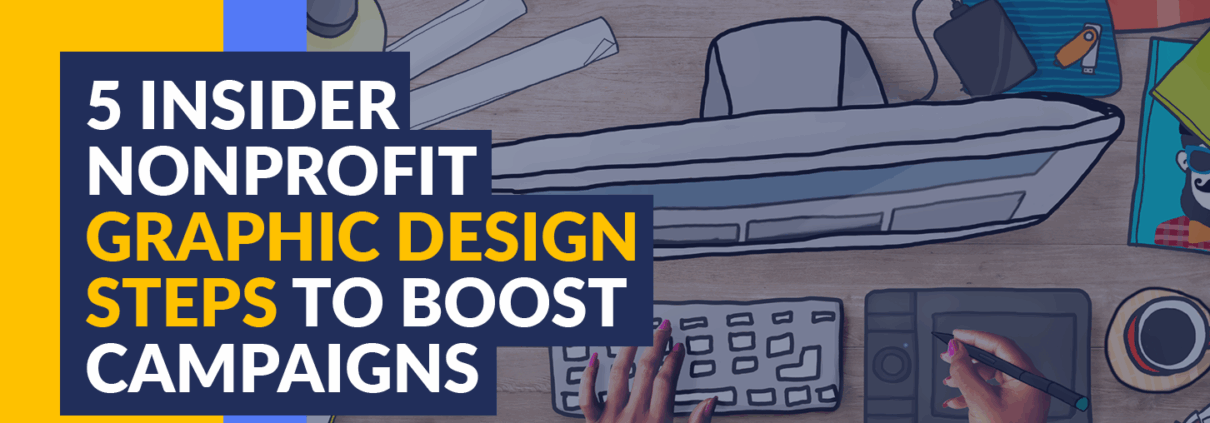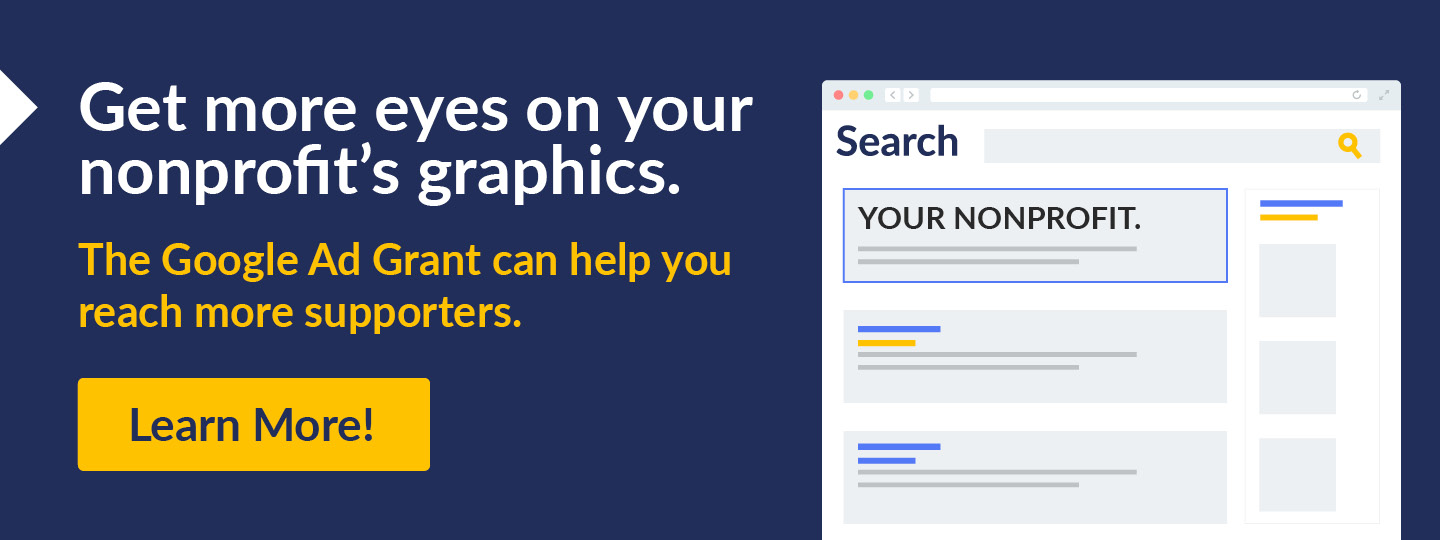5 Insider Nonprofit Graphic Design Steps to Boost Campaigns
Nonprofit marketing helps organizations raise awareness about their missions, promote their services in the community, and attract volunteers and donors.
Take your nonprofit’s marketing strategy to the next level by incorporating high-quality graphic design. These graphics have a host of benefits for your nonprofit—for example, studies indicate that 46% of consumers decide the credibility of an organization based on its web designs and visual content. Quality graphics also make your message more engaging for your supporters and boosts your overall brand awareness.
We’ll cover these five designer-approved steps to creating a great nonprofit graphic design strategy:
- Establish Your Nonprofit’s Brand
- Choose Graphic Design Tools to Get Started
- Tell Stories Through Your Graphic Design
- Keep Your Nonprofit’s Audience in Mind
- Stay Open to New Graphic Design Ideas
Graphic design has high rewards for nonprofits, but getting started can be difficult. To help you take that first step, we’ll jump into how to develop your nonprofit’s brand.
1. Establish Your Nonprofit’s Brand
Every organization needs a unique brand, including nonprofits. While you may not be selling a product or service to customers like most brands do, you’re still selling something—your impact. When potential supporters come across your marketing materials, they’re deciding if they want to “buy” into your mission by supporting the cause.
Your nonprofit’s brand needs to be recognizable to supporters immediately. Surveys show that choosing a signature color to represent your organization can increase brand recognition by 80%. That way, anyone who comes across your marketing materials will immediately associate them with you.
Here are the key visual branding elements to include in your graphic design strategy:
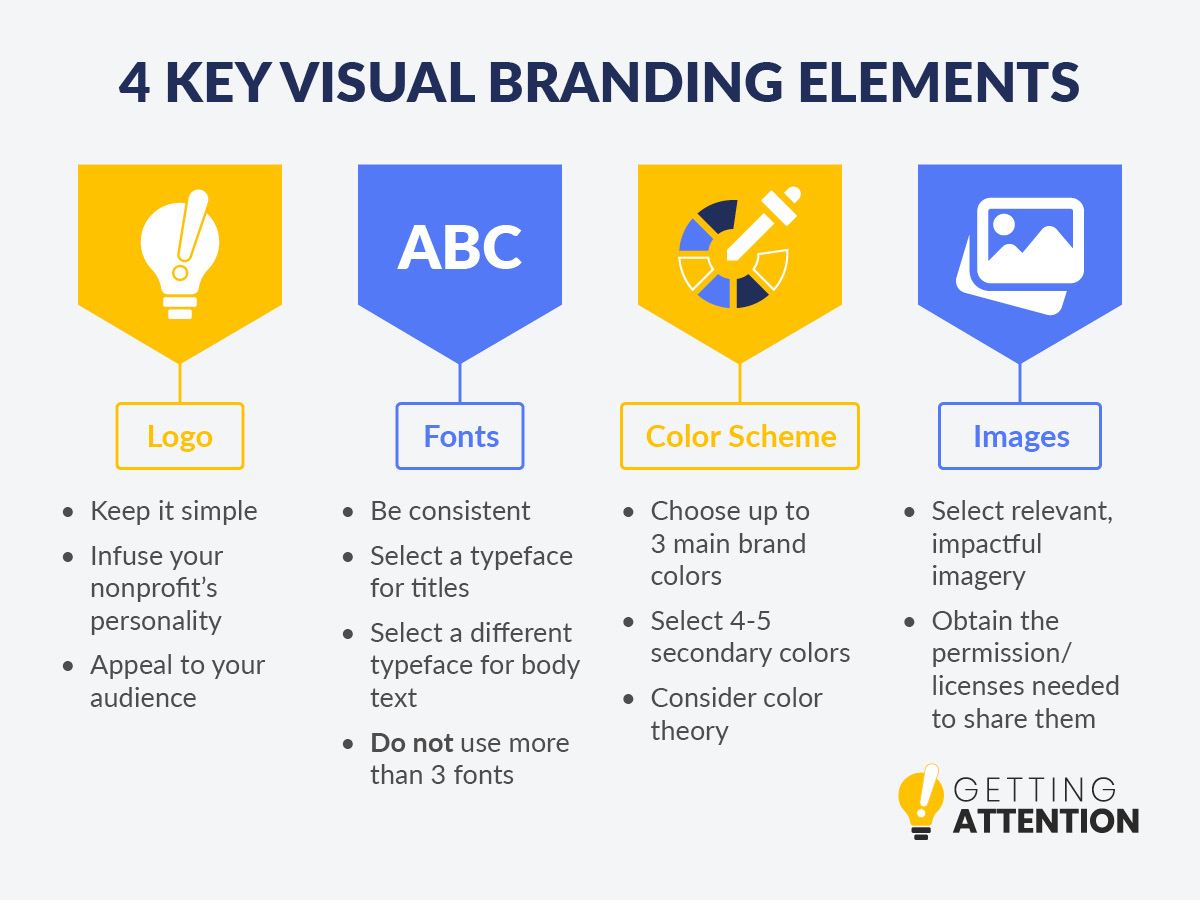
- Logo. A well-designed logo will be the most noticeable part of your brand for your supporters. Create a logo for your nonprofit that expresses your organization’s personality, isn’t overly complicated, and resonates with your audience.
- Fonts. Using the same fonts across all your communications ties them together in your supporters’ minds. Choose two distinct yet harmonious brand typefaces: one for titles or headings and one for body text. To avoid a cluttered look, don’t use more than three fonts.
- Color Scheme. It’s recommended to select up to three main brand colors and four to five secondary colors. Make sure to consider color theory to choose a color scheme that balances harmony and contrast.
- Images. Whenever you include photos or graphics in your marketing materials, make sure they reflect your organization’s mission and your supporters’ values. Additionally, make sure your nonprofit has the appropriate permissions and licenses to use and share them.
To keep your branding consistent across all marketing materials, create a nonprofit brand guide that details all the elements above, as well as information about the communication platforms you use and the audience for each one.
2. Choose Graphic Design Tools to Get Started
Once you’ve established a brand for your nonprofit, you can start designing! You’ll need to have a set of graphic design tools that will help your work, not hinder it. Choose tools that are beginner-friendly and cost-effective.
Here are our recommendations to get you started:
Graphic Creator
According to recent studies, 45% of marketers use infographics to promote their products or services. Join this movement by creating graphics that are custom to your nonprofit. To get started, you’ll need to choose a beginner graphic creator where you can use templates to design flyers, infographics, social media posts, and even short videos.
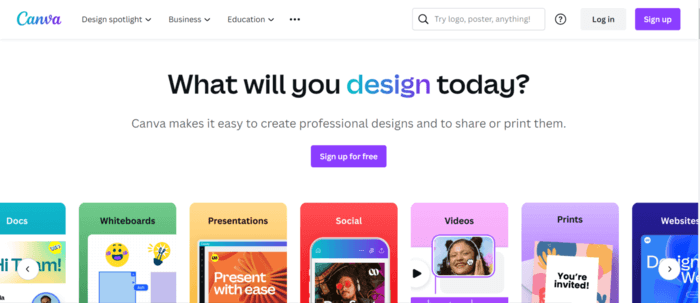
Canva is a streamlined, beginner-friendly tool. It’s more user-friendly and low-cost than platforms like Adobe Illustrator, making it perfect for busy nonprofit professionals. The platform offers customizable templates for documents, presentations, social media posts, videos, and more. You’ll also have access to Canva’s library of free-use graphics, images, and fonts.
Make sure to apply for Canva’s nonprofit plan to access premium features for free.
Stock Image Source
When you can, take pictures of your supporters engaging with your cause during events or your staff working with beneficiaries. These images will communicate the work you do and show your audience the real people behind your impact.
However, it’s not always feasible to have a professional-quality, organization-owned image ready for every occasion. This is where stock photos can come in handy.
There are many different sources you can use for quality stock images. While some require paid subscriptions, there are plenty of free options available as well.
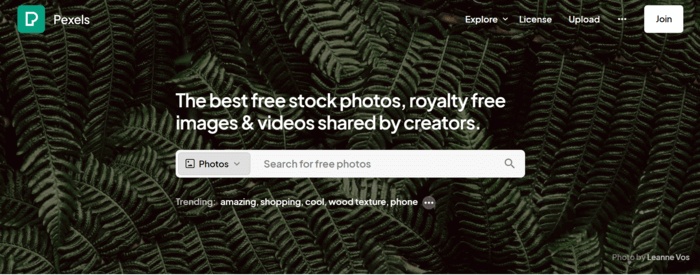
Pexels is an online source for free stock images. The website has an easy-to-use search bar where you can type keywords related to your nonprofit to find the perfect images. The site offers stunning, unique images for various terms from “animal rescues” to “charity food pantry,” so you’re bound to find media that suits your organization.
Don’t forget to look here for videos, too—Pexels offers thousands of clips that could be the perfect B-roll footage for your next video campaign.
Website Builder
With an intuitive website builder, you can create and update your organization’s website without having to hire a web developer to code the site from scratch.

WordPress is one of the most popular website builders across all sectors. Select a sleek theme and easy-to-use layout to give your supporters a pleasant user experience. This solution is flexible and allows you to get creative. For example, you can include blogs, newsletter signup pages, eCommerce stores, and even educational courses within WordPress.

Morweb, on the other hand, provides web support specifically for nonprofits and other mission-driven organizations. Morweb can help you develop a custom website with modules streamlined to provide an intuitive user experience, meet accessibility compliance, and integrate with external APIs. Additionally, Morweb’s team will be there to support you each step of the way, even during the migration and post-launch phases.
3. Tell Stories Through Your Graphic Design
No matter what graphic design tools you use, everything you create should point back to your nonprofit’s mission. Using graphic design to tell stories is a great way to highlight your organization’s community impact and function.
Storytelling is the way to go in order to get your message to stick in your supporters’ minds. People often remember stories considerably more than statistics, and using this method can increase conversions by 30%. Stories also get your supporters emotionally involved in your mission, inspiring them to take action.
You don’t have to—and shouldn’t—limit your storytelling efforts to words alone. Graphic design can add to verbal stories or become a story in itself. To incorporate graphic design into your nonprofit’s storytelling on different platforms, start with these ideas:
- Create a carousel of images celebrating a successful event on your website.
- Feature those who’ve benefitted from your services in social media posts with images and descriptive captions.
- Design header images for marketing emails to detail your mission statement creatively before diving into the specifics of the message.
- Add charts and graphs in your brand colors to your presentations to show successes and areas of improvement backed up by data.
Wherever you use stories in your designs, make sure they reflect both your organization’s overall goals and the intent of that particular piece of communication.
4. Keep Your Nonprofit’s Audience in Mind
Your goal is to make your nonprofit stick in your supporters’ minds. So, you’ll need to shape your designs to reflect their needs, wants, and interests by analyzing your donor data.
However, not every supporter of your nonprofit has the same needs, wants, or interests. To develop designs that appeal to various segments of your audience, keep these considerations in mind:
Demographics
Gathering demographic data on your supporters is the first step to understanding your audience. If you know more about the groups who support your cause, you can tailor your design strategy to their interests.
These are some common demographic factors that will be helpful to know about your nonprofit’s audience:
- Age
- Gender
- Location
- Education
- Family status
- Wealth
These factors all influence how your audience thinks and what they value, shaping their unique motivations for engaging with your nonprofit. For example, younger generations may want to see social media graphics or digital flyers about creating positive change in society, while older generations might prefer charts incorporated into presentations related to tax-deductible giving.
Past Engagement
Demographics give you more context about who your donors are, but past engagement data will tell you more about how individual supporters interact with your nonprofit.
These considerations will be most useful from a design-strategy standpoint:
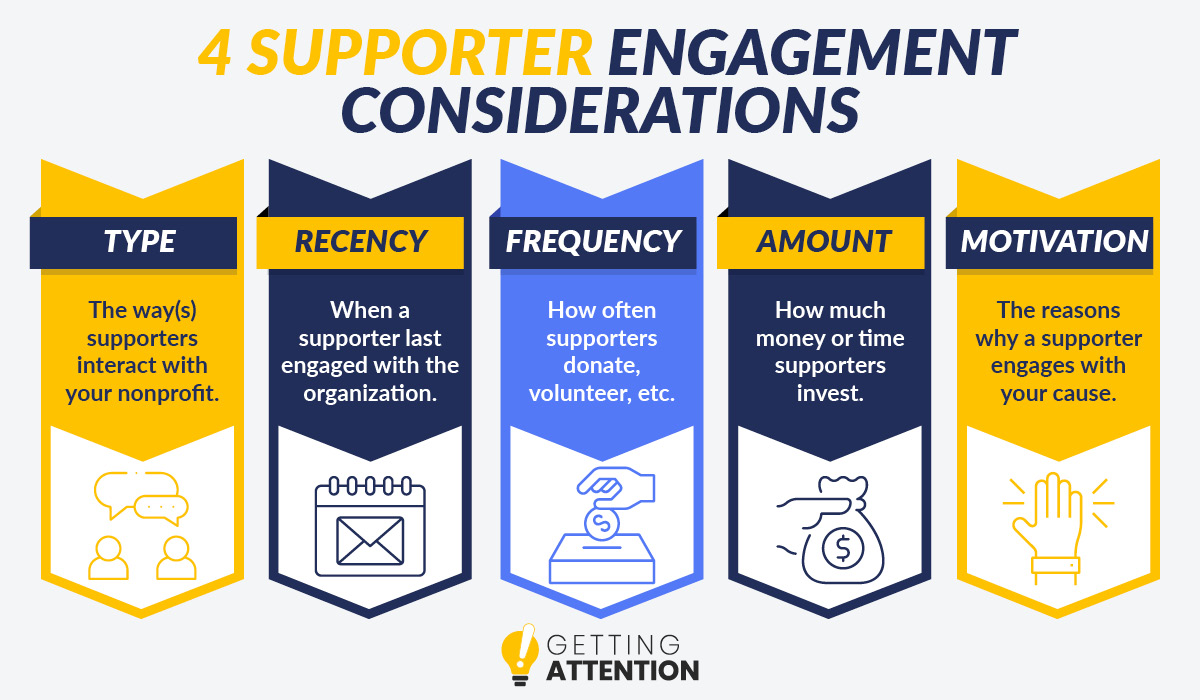
- Type: This refers to the way(s) supporters interact with your nonprofit, such as giving monetary gifts, in-kind gifts, volunteering, etc.
- Recency: This indicates when they made their last contribution or attended their last event.
- Frequency: This metric refers to how often supporters donate or volunteer.
- Amount: This illustrates how much money they give each time, or how much total time they’ve spent volunteering and attending events.
- Motivation: This information highlights why they’re involved with your organization (for example, a personal connection to your cause).
Engagement analytics can also help you prioritize certain groups within your audience to boost retention rates. After all, retaining your current supporters is more cost-effective for day-to-day operations than attracting new ones.
Decide which set of engagement data is most important to your graphic design strategy based on your nonprofit’s current goals. If you want to increase the frequency of the donations, for example, highlight the benefits of becoming a monthly donor in your designs.
Supporter Segmentation
When you combine demographic and past engagement data, you can start segmenting your supporter base.
A supporter segment is a group of people who interact with your nonprofit and share characteristics. Your segments may include a group of long-term major donors who are likely older, wealthy, and educated. Another segment might be made up of volunteers acquired through social media who are younger and have fewer means to donate at this point.
Once you’ve established segments that represent your core group of supporters, you can use your understanding of who you’re targeting in each of your marketing campaigns to adapt your graphic design choices. When communications are personalized to them, your audience will be more likely to engage with your nonprofit’s communications and respond to your calls to action.
5. Stay Open to New Graphic Design Ideas
When you’re getting started with nonprofit graphic design and developing a marketing strategy, you’ll need to stay flexible with your ideas and process.
Flexibility doesn’t make planning any less important—you should still outline each of your design ideas in detail and make sure they align with your goals. But don’t be surprised if you end up going in a different direction based on initial reactions to your concepts, new data on your audience, or new trends in your space.
Here are some popular nonprofit marketing trends that can help your organization reach and resonate with its audience:
- Personalization. Because it’s so easy to access data about your supporters, be sure to personalize each communication to their preferences. In an email marketing campaign, for example, you might include their name in the subject line. When it comes to graphic design, tailor your imagery and copy to the segment you want to appeal to (e.g., for cat lovers, use images of kittens in communications from your animal shelter). Consider accessibility-related concerns your audience might have as well.
- User-generated content (UGC). This term refers to content created by your organization’s supporters (e.g., a volunteer posting pictures documenting their experience), which is often seen as more trustworthy or authentic. You can make it easy for supporters to create UGCs by providing a kit of branded templates they can customize. For example, to motivate them to share your upcoming charity race, you could create social media post templates they can add their names or a personal message to.
- Technology grants. Initiatives like the Google Ad Grants program give nonprofits funding or free credits they can put toward their marketing efforts. Many organizations are taking advantage of these programs to make their advertising budget go further and reach wider audiences. By applying for the Google Ad Grant, for example, you can drive more interested users to your website, where they’ll see your engaging graphic design work. Check out the video below for more benefits of the program:
Consider reaching out to specialized consultants to improve your marketing results. To help manage your Google Grant account, you might work with a marketing consultant. They’ll help you pick relevant keywords, maintain compliance, design engaging ad copy, and more.
If you work with a graphic designer, for example, you’ll give them an overview of your strategy and tell them about your plans for certain designs. Then, they’ll come back with examples of content.
Additional Resources
Creating great graphic designs for your nonprofit will go a long way in attracting, engaging, and retaining supporters. Follow these steps to start adding graphic design to your nonprofit’s marketing strategy.
For more tips and tricks about nonprofit graphic design and marketing, check out these resources:
- Getting Started with YouTube for Nonprofits in 3 Steps. Want to know how to translate graphics into video? Learn how to use this media channel to engage your audience.
- Nonprofit Branding: The Complete Guide + 10 Examples. Discover the basics of building a brand for your nonprofit, and get inspired by examples from 10 top nonprofits.
- Promoting Your Mission: 13 Free Nonprofit Marketing Tools. If you’re in search of more marketing tools, look no further than this comprehensive guide with our top recommendations.
